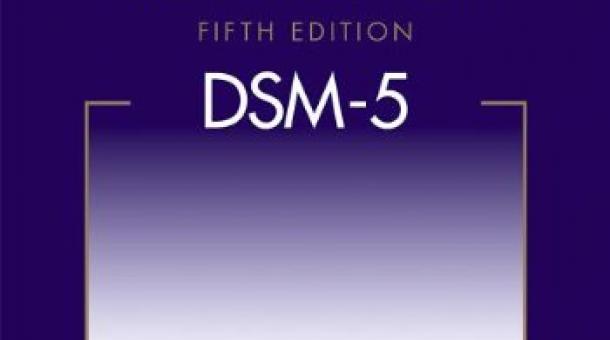Most people know that the state and federal governments provide disability payments to those in need on a temporary or even permanent basis. It could be to a construction worker who broke both his legs after falling from scaffolding a few stories up…or perhaps to a machine worker who maimed her hand by getting it caught in a piece of heavy machinery. But what may be less well known is that many individuals suffering from mental health issues may qualify for disability as well.
For instance, those suffering from bipolar (manic-depressive) disorder, anxiety, or autism can, under certain circumstances, all qualify for disability benefits.
Applicants Must Meet Strict Criteria
Mental health disorders are generally not evident merely by looking at someone. Therefore, before determining that someone is eligible for disability benefits, the government requires certain proof of the mental disorder and its effect on the individual’s ability to perform the routine functions of daily life. The required proof can and often does vary between disorders, but there are a few general principles that hold true across the board.
 It is important to keep a well-documented history of the disease. This includes both the diagnosis and treatment history. The government official reviewing your application will be looking to see how long you have had the disease and how long you have been receiving treatment for it (as well as whether there are gaps in treatment). For example, some disorders require that the individual be suffering from the symptoms for at least two years. Additionally, if there are gaps in treatment it may indicate to the reviewer that the condition is not as serious as it may be in reality.
It is important to keep a well-documented history of the disease. This includes both the diagnosis and treatment history. The government official reviewing your application will be looking to see how long you have had the disease and how long you have been receiving treatment for it (as well as whether there are gaps in treatment). For example, some disorders require that the individual be suffering from the symptoms for at least two years. Additionally, if there are gaps in treatment it may indicate to the reviewer that the condition is not as serious as it may be in reality.
Aside from the diagnosis and treatment history, applicants must also show how the disease affects their day-to-day life. For example, someone seeking disability benefits for anxiety will need to show not just that they have been diagnosed and treated for the disorder, but also that it has a profound impact on their daily life. This can partially be proven through showing a restricted ability to socialize or concentrate. Such documentation most often requires ongoing communications with the diagnosing and treating physicians.
The Social Security Administration has a very strict and specific set of requirements to obtain benefits and denies about 70% of first-time applicants. But, that is not necessarily the end of the road; applicants can appeal the Administration’s decision or even re-apply. Hiring a lawyer to assist in the process is one way to increase the chances of receiving benefits on the first go-around.
Disability for Minor Children Under the Age of Eighteen
You are probably familiar with Social Security Income Disability (SSID), or at least the concept that those aged 65 or older, or those who are blind or disabled, can qualify for disability benefits from the state and/or federal government. But what you may not know is that minor children can also qualify for disability benefits if they suffer from a qualifying disability. Often, these benefits will be provided to the child’s parent or caretaker because the child is unable to care for himself due to age or disabled status.
 As is the case with adults, a child’s disability eligibility and potential benefit amount is determined by a number of factors. These factors include the child’s medical condition, the child’s income (if any), and the family’s income. Once an application is sent to the Social Security Administration it generally takes up to three to five months for the Administration to review and process the disability request. Certain disabilities, however, are eligible for the immediate payment of benefits.
As is the case with adults, a child’s disability eligibility and potential benefit amount is determined by a number of factors. These factors include the child’s medical condition, the child’s income (if any), and the family’s income. Once an application is sent to the Social Security Administration it generally takes up to three to five months for the Administration to review and process the disability request. Certain disabilities, however, are eligible for the immediate payment of benefits.
What Happens When a Disabled Child Turns Eighteen Years Old?
Expanded Disability Eligibility? New Diagnostic Manual Broadens the Definition of Many Mental Illnesses
The American Psychiatric Association’s “Diagnostic and Statistical Manual on Mental Disorder” (DSM) is considered the “bible” among mental-health professionals. The purpose of the DSM is to provide a standard set of criteria on which to base diagnoses, so there is consistency across the country regarding mental-illness diagnoses. The manual also determines what the type and duration of care individuals with specific illnesses require. Doctors, insurance companies, schools, and government agencies all look to the DSM for a variety of purposes.
 The DSM, as important as is it, is not updated all that often. The last substantive change to the diagnosis criteria was in 1994, with the DSM-IV. However, just last month, the long-awaited fifth version of the DSM was released, the DSM-V. Chief among the differences between the DSM-IV and the DSM-V is the treatment and definition of many mental health issues.
The DSM, as important as is it, is not updated all that often. The last substantive change to the diagnosis criteria was in 1994, with the DSM-IV. However, just last month, the long-awaited fifth version of the DSM was released, the DSM-V. Chief among the differences between the DSM-IV and the DSM-V is the treatment and definition of many mental health issues.
The new version of the DSM is said to broaden the definition for many mental health issues. For example, there were some big changes to the clinical definition of ADHD. It used to be that a child must be 12 to be diagnosed with ADHD; now children as young as 7 may be diagnosed. Also, those over the age of 17 need only meet 5 criteria rather than the 6 that were required before. There were also significant changes to the clinical diagnosis for depression and autism, making the diagnosis process more nuanced and adding sub-categories that were previously unavailable.
Drugs and Alcohol Regulation Redux
 On March 22, 2013, SSA’s new policy interpretation ruling [SSR 13-2p] became effective. This ruling replaced a 31 year old ruling SSR 82-60. The new SSR was based on not only SSA’s existing literature but also on information from medical and legal experts along with the Substance Abuse and Mental Health Services Administration. It is a complex and comprehensive ruling.
On March 22, 2013, SSA’s new policy interpretation ruling [SSR 13-2p] became effective. This ruling replaced a 31 year old ruling SSR 82-60. The new SSR was based on not only SSA’s existing literature but also on information from medical and legal experts along with the Substance Abuse and Mental Health Services Administration. It is a complex and comprehensive ruling.
The new SSR beings with the acknowledgement that under, 42 U.S.C. 423(d)(2)(c), of the Social Security Act, a claimant “shall not be considered to be disabled. . . if alcoholism or drug addiction would. . . be a contributing factor material to the Commissioner’s determination that the individual is disabled.” 42 C.F. R. § 404.1535 addresses how the Commissioner will determine whether a claimant’s drug and alcoholism is a contributing factor material to the determination of disability.
Interestingly, the new ruling includes two mental disorders, that are considered, substance-induced disorders. These two disorders are substance-induced persisting dementia and substance-induced persisting amnestic disorder. When a claimant has symptoms from either of these 2 substance-induced disorders, the model for assessing materiality for drug and alcohol is employed.
Federal Court Review of Failure to Prove “Good Cause” for late filing
 Does a Federal District Court have jurisdiction to review a decision of an Administrative Law Judge’s (ALJ) failure to find “good cause” and thereby allow a late filing for a request for hearing? The answer is generally no. 20 C.F.R. § 404.911 requires that a claimant who files late must show that he/she had “good cause” for missing the filing deadline. Good cause may include such matters as the claimant being seriously ill and therefore not have the ability to contact SSA himself or through a friend or relative; death or serious injury in the claimant’s immediate family; important records destroyed by fire or other accidental cause; could not find the information to support your claim within the time required despite trying very hard; the claimant was given incorrect information about when and how to request a hearing; unusual or unavoidable circumstances that showed the claimant could not have known of the need to timely file or which prevented him from timely filing. These are only a few examples.
Does a Federal District Court have jurisdiction to review a decision of an Administrative Law Judge’s (ALJ) failure to find “good cause” and thereby allow a late filing for a request for hearing? The answer is generally no. 20 C.F.R. § 404.911 requires that a claimant who files late must show that he/she had “good cause” for missing the filing deadline. Good cause may include such matters as the claimant being seriously ill and therefore not have the ability to contact SSA himself or through a friend or relative; death or serious injury in the claimant’s immediate family; important records destroyed by fire or other accidental cause; could not find the information to support your claim within the time required despite trying very hard; the claimant was given incorrect information about when and how to request a hearing; unusual or unavoidable circumstances that showed the claimant could not have known of the need to timely file or which prevented him from timely filing. These are only a few examples.
If good cause is found, then the claim for disability benefits can proceed as normal. However, if “good cause” is not found, then the claim will be dismissed. If the claim is not found the claim will be dismissed. Even if the local SSA office finds that “good cause” exists, an ALJ may override that decision and decide that good cause was not shown and dismiss the claim.
If the claim is dismissed by the ALJ, the claimant may appeal that decision to the Appeals Council. If the Appeals Council decides that the ALJ did not error in dismissing the case, generally the case ends at that point. The Federal District Court, which had the legal authority to review a decision of the Commissioner regarding disability benefits, may only review those cases after there has been an evidentiary hearing on the merits of the claim. Watters v. Sec. of Health and Human Servs., 656 F.2d 234, 236 (7th Cir.1980) (emphasis added); see also Johnson v. Sullivan, 936 F.2d 974, 975 (7th Cir.1991) (emphasis added) (quoting Califano V. Sanders, 430 U.S. 99, 97 S.Ct. 980, 51 L.Ed.2d 192 (1977)).
Behind the Curtain. . . Secret ALJ Policy Comes to an End
 Beginning in late 2011, the Social Security Administration adopted a policy to keep the identity of the Administrative Law Judges assigned to Social Security Disability cases at ODAR a secret until the hearing. The motivation for this rule was an effort on SSA’s part to avoid a claimant declining a National Hearing Center video hearing in order to get a different ALJ. Most attorneys who represent claimants know the ALJs, their preferences and what to expect at the hearings. In order to meet the particular expectations of the judge, to screen for conflicts, to avoid delay, to comply with regulations that require pre-hearing communication directly with the judge, and to know more about what to expect in the hearing, it is necessary to learn the identity of the ALJ.
Beginning in late 2011, the Social Security Administration adopted a policy to keep the identity of the Administrative Law Judges assigned to Social Security Disability cases at ODAR a secret until the hearing. The motivation for this rule was an effort on SSA’s part to avoid a claimant declining a National Hearing Center video hearing in order to get a different ALJ. Most attorneys who represent claimants know the ALJs, their preferences and what to expect at the hearings. In order to meet the particular expectations of the judge, to screen for conflicts, to avoid delay, to comply with regulations that require pre-hearing communication directly with the judge, and to know more about what to expect in the hearing, it is necessary to learn the identity of the ALJ.
Many representatives believed that they were entitled, by law, to learn the identity of the ALJ in advance of the hearing. To that end, representatives nationwide began filing requests for the name of the ALJ through the Freedom of Information Act (FOIA). Initially, SSA rejected the requests made under the FOIA for disclosure of the identity of the ALJ claiming that because the request: “related solely to the internal personnel rules and practices of an agency,” the information sought was deemed the internal personnel assignment of an agency employee to a particular case. Therefore, the Agency reasoned, the claimant was not entitled to this information.
SSA’s denial for the request under the FOIA prompted litigation. One of the lead cases was Hoagland v. Social Security Administration, C12-05750 (W.D. Wash. 2012). In that case, Dallas Hoagland filed a complaint under the Freedom of Information Act to discover the name of the Administrative Law Judge assigned to his case. SSA settled the case by naming the judge and paying attorney fees to Mr. Hoagland’s attorney for bringing the action in the first place. Shortly after that case, SSA began to disclose the names of the ALJs assigned to cases to those claimants who requested that information under the FOIA by using the SSA web site.
Social Security Administration Did Not Meet Its Goal for Quicker Hearing Decisions
 The Social Security Administration recently issued its Summary of Performance & Financial Information Fiscal Year 2012. In that Summary, SSA wrote that its #1 Strategic Goal was to “Deliver Quality Disability Decisions and Services”. In order to reach that goal, SSA identified 3 strategic objectives: 1.) minimize the average wait time from hearing request to decision; 2.) eliminate the oldest remained pending hearing requests; 3.) minimize the average processing time for initial disability claims; and 4.) achieve a target percentage of the quick disability cases. While these 4 goals are important, the one goal which impacts the disabled the most is the wait time for hearings and final decisions.
The Social Security Administration recently issued its Summary of Performance & Financial Information Fiscal Year 2012. In that Summary, SSA wrote that its #1 Strategic Goal was to “Deliver Quality Disability Decisions and Services”. In order to reach that goal, SSA identified 3 strategic objectives: 1.) minimize the average wait time from hearing request to decision; 2.) eliminate the oldest remained pending hearing requests; 3.) minimize the average processing time for initial disability claims; and 4.) achieve a target percentage of the quick disability cases. While these 4 goals are important, the one goal which impacts the disabled the most is the wait time for hearings and final decisions.
Quicker Hearings.
By far, the biggest surprise for the disabled is to learn that the wait for a hearing decision can be close to or over 1 year from the date a request for a hearing (instead of the date on which the initial application was filed) was filed. In 2012, the average wait time from asking for a hearing to actually having a decision was 362 days or just 3 days short of 1 year.
Social Security Commissioner Announces New Compassionate Allowances Conditions
 Less than a month ago, the Commissioner of Social Security announced the addition of 35 Compassionate Allowances conditions. I discussed the concept of the Commissioner’s Compassionate Allowances in my blog post on February 25, 2009 “Social Security Compassionate Allowances Means Quick Determinations in Some Cases”. At that time, there were 50 conditions on the list. Now, with the addition of the newest 35, the Compassionate Allowances list has grown to 200. A person with one of the 200 conditions may be fast tracked so that their cases can be decided in dayy.
Less than a month ago, the Commissioner of Social Security announced the addition of 35 Compassionate Allowances conditions. I discussed the concept of the Commissioner’s Compassionate Allowances in my blog post on February 25, 2009 “Social Security Compassionate Allowances Means Quick Determinations in Some Cases”. At that time, there were 50 conditions on the list. Now, with the addition of the newest 35, the Compassionate Allowances list has grown to 200. A person with one of the 200 conditions may be fast tracked so that their cases can be decided in dayy.
These new conditions include: Adult Non-Hodgkin Lymphoma; Adult Onset Huntington Disease; Allan-Herndon-Dudley Syndrome; Alveolar Soft Part Sarcoma; Aplastic Anemia; Beta Thalassemia Major; Bilateral Optic Atrophy- Infantile;
Caudal Regression Syndrome – Types III and IV; Child T-Cell Lymphoblastic Lymphoma;
ODAR Hearing Offices in Indiana Are Improving Processing Times

There are 165 hearing offices in the United States called ODAR [Office of Disability Adjudication and Review] hearing offices. The ODAR hearing offices are “were disability claimants appear before an independent judge (called an “Administrative Law Judge”) to appeal a denial by the Social Security Administration of an application for disability benefits. Over the past several years, the wait to get a hearing and a decision from the ODAR has been close to two years. When the Social Security Administration has measured the speed at which the various ODARs have resolved their cases, the Indiana ODARs have come in at or close to the bottom of all the ODARs in the nation.
The wait has been the subject of public outcry and and Congressional Hearings. As a consequence, the Social Security Administration has implemented several measures to shorten the time at the ODAR. Those improvement measures seems to be working. The latest Social Security Administration review of ODARs nationwide, shows that the Indianapolis ODAR is now 61st in the nation [tied with Detroit] with a 336 day processing time, Ft. Wayne ODAR is 77th with a 349 day processing time, Evansville ODAR is 120th with a 384 day processing time and Valparaiso ODAR is 125th with a 391 day processing time.
The quickest ODAR is Shreveport with a 234 day processing time. The slowest ODAR office is St. Louis with a 485 day processing time.
 Indiana Social Security Disability Attorney Blog
Indiana Social Security Disability Attorney Blog










